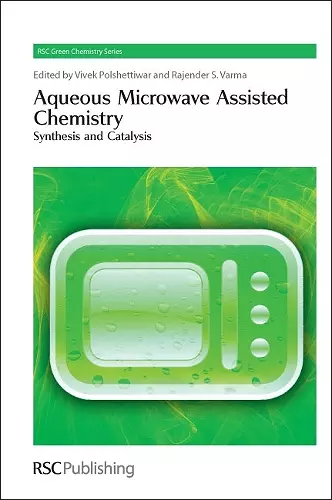Aqueous Microwave Assisted Chemistry
Synthesis and Catalysis
Vivek Polshettiwar editor Rajender S Varma editor
Format:Hardback
Publisher:Royal Society of Chemistry
Published:20th May '10
Currently unavailable, and unfortunately no date known when it will be back

1. A comprehensive overview, written by well known microwave experts, of the various processes developed using aqueous microwave chemistry 2. The first book that deals strictly with aqueous microwave chemistry and represents a significant effort towards green chemistry 3. Each chapter contains representative experimental procedures, helping the reader quickly replicate some of the experiments to gain hands-on experience
Provides a comprehensive overview of the various processes developed using aqueous microwave chemistry, which is an environmentally, friendly green chemistry technique.
The demands for green and sustainable synthetic methods in the fields of healthcare and fine chemicals, combined with the pressure to produce these substances expeditiously and in an environmentally benign fashion, pose significant challenges to the synthetic chemical community. Green chemistry can avoid pollution by utilizing techniques that are environmentally friendly by design and one of the best green techniques is the use of microwave (MW) assisted aqueous synthetic protocols. Fusing MW technique with water (as a benign reaction medium) can offer an extraordinary synergistic effect with greater potential than these two individual components in isolation. Selective microwave heating can be exploited to develop a high yield protocol and the use of water expedites the MW-protocol with more energy efficiency. This book provides an overview of the various processes developed using aqueous microwave chemistry and is written for chemists, chemical engineers and researchers in the early stages who want to develop sustainable and green processes. Written by well known microwave experts, the book is a comprehensive examination of the field and is the first book that deals strictly with aqueous microwave chemistry and represents a significant effort towards green chemistry. It covers all the microwave-assisted aqueous reactions in depth, including heterocycle synthesis, metal catalysis, enzyme catalysis, polymer synthesis, nanomaterials synthesis and nano-catalysis. Each chapter contains representative experimental procedures, helping the reader quickly replicate some of the experiments to gain hands-on experience.
""Both (editors) are known for their work in the area of micorwave-assisted synthesis, and Varma is considered a prominent elder statesman of the field.""For someone interested in getting into the field....this book may well prove to have value for the money."
* JACS 2011, 133, 2011, Nicholas E Leadbeater *The title book is the 7th in the RSC Green Chemistry Series that combines two green chemical disciplines, microwave (MW)-assisted reactions and the use of water as a medium for organic reactions. Thus, the selection covers a really hot topic in environmentally-friendly chemistry...The book, written by MW experts in actual hot topics, is suggested to chemists, biochemists, chemical engineers and researchers including also PhD-, graduate- and undergraduate students.esearchers including also PhD-, graduate- and undergraduate students.
* Current Green Chemistry, 2014, Vol. 1, No. 3, 2ISBN: 9781849730389
Dimensions: 234mm x 156mm x 14mm
Weight: 520g
228 pages